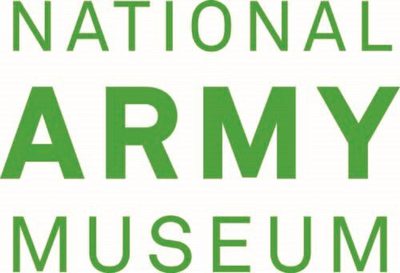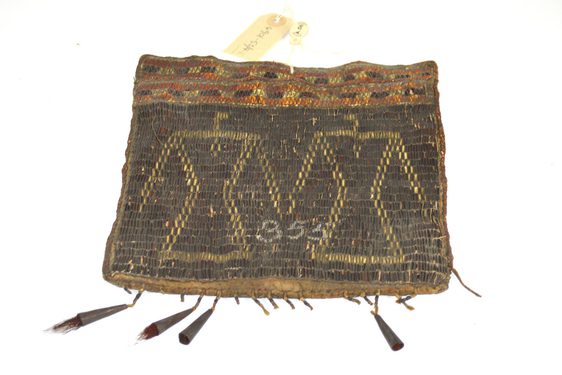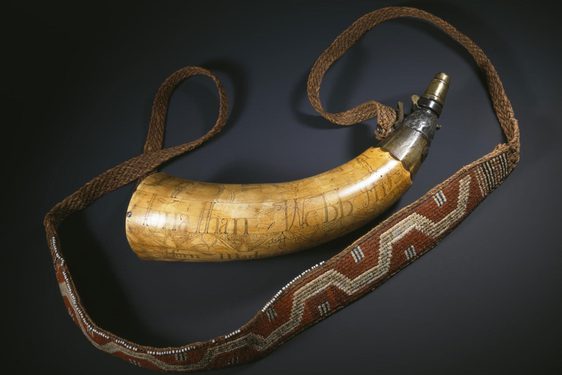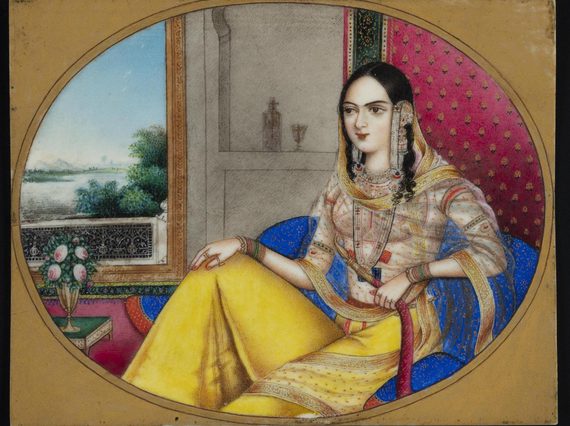
Baggage and Belonging: Collecting practices of the British Army
This collaborative research partnership reappraises motivations for military collecting. It investigates cultures of collecting by members of the British armed forces while on campaign and garrison duty in Africa and India during the late 18th and 19th centuries.
Last updated: 22 February 2022
About the project
In 2017 National Museums Scotland was awarded a major grant by the Arts and Humanities Research Council (AH/P006752/1) to examine the rich and diverse material legacy of late 18th and 19th-century British military campaign, building on pilot projects funded by the Royal Society of Edinburgh and the British Academy/Leverhulme, and conducted in partnership with the National Army Museum.
Over 130 military museums in the UK preserve the historical collections of British regiments, corps and services. Their collections contain artefacts acquired by British servicemen in colonial warfare and on imperial garrison duties across the globe, variously acquired as trophies, prize, souvenirs, curios and specimens. These objects are little known outside the constituency of military history and within their current institutions rarely researched in reference to their complex intercultural biographies.
- Project title
Baggage and Belonging: Military Collections and the British Empire, 1750 – 1900
- Project active
2017 - 2021
- Research theme
Scotland's Material Heritage, Identities and Cultural Contacts
Contributors
Dr Henrietta Lidchi – Principal Investigator
Head of Research and Collections, National Museum of World Cultures, Leiden, Netherlands
Research Associate and former Keeper of World Cultures, National Museums Scotland
Dr Stuart Allan – Co-Investigator
Keeper of Scottish History and Archaeology, National Museums Scotland
Nicole Hartwell – National Army Museum Research Fellow in Indian Military History, Selwyn College, Cambridge
Research Associate and former Postdoctoral Researcher, Department of Scottish History and Archaeology, National Museums Scotland
Maggie Briggs – Project Administrator
Former Adminstrator, Department of World Cultures, National Museums Scotland
Alastair Massie and Peter Johnston
Former Heads of Research and Academic Access, National Army Museum
Advisory Board
Christopher Evans
Executive Director, Cambridge Archaeological Unit, Department of Archaeology, University of Cambridge
Clare Harris
Professor of Visual Anthropology, Institute of Social and Cultural Anthropology, University of Oxford, and the Pitt Rivers Museum
JD Hill
Research Manager, British Museum
Charles Kirke
Visiting Fellow, Cranfield University
John Mack
Professor of World Art Studies, Sainsbury Research Unit for the Arts of Africa, Oceania and the Americas, University of East Anglia
John M. Mackenzie
Professor Emeritus, University of Lancaster
Alastair Massie
Research Fellow, National Army Museum
Edward M. Spiers
Professor of Strategic Studies, University of Leeds
Louise Tythacott
Pratapaditya Pal Senior Lecturer in Curating and Museology of Asian Art School of Oriental and African Studies (SOAS), University of London
This interdisciplinary project seeks to reappraise the practices, culture and significance of British military collecting of objects from Africa and India during the period 1750 to 1900.
By tracing collections histories through archival and material evidence the project is investigating the meaning of non-European objects in military organisational culture and their value as material witnesses of encounters between non-European peoples and imperial forces. Furthermore, it reappraises the complex variety of motivations for military collecting. These range, on the one hand, from the deliberate and systematic looting of captured fortresses or cities with which we in the post-colonial world are perhaps now most familiar, to the exchange of gifts and trade between military allies on the other.
The project involves the examination of ethnographic material in the collections of regimental and corps museums across the United Kingdom to develop a greater understanding of the material legacies of Empire.
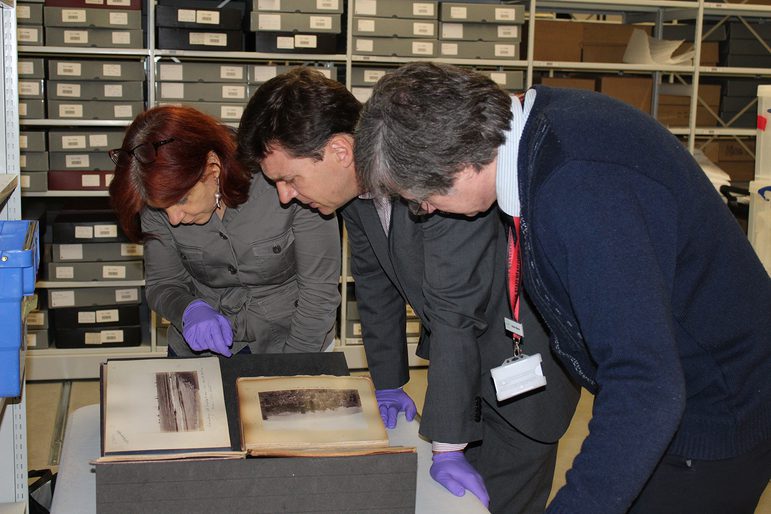
It has brought together an international group of military historians, anthropologists and material culture specialists to share their knowledge and expertise with corps and regimental museum curators. The project has led to a number of outputs including: conference presentations, journal and magazine articles, a book (Dividing the Spoils: Perspectives on Military Collections and the British Empire, Manchester University Press, 2020), knowledge exchange workshops, an international seminar (held at the National Army Museum in February 2020), and an exhibition at the National War Museum at Edinburgh Castle which opened in November 2020, titled ‘Legacies of Empire’. A second book is currently in preparation.
Alongside our core Project Team the project had an Advisory Board comprising university and museum-based academics working in the fields of cultural and visual anthropology, military history, military anthropology and archaeology.
This multi-disciplinary group convened bi-yearly to provide academic oversight and expert advice and networks for our project outputs.
Project catalogues
The catalogues of museum collections surveyed for Baggage and Belonging: Military Collections and the British Empire draw directly from existing museum documentation and project-based research. Most of the provenance research was undertaken by Nicole Hartwell, the postdoctoral researcher (2017-2020) on the project.
The initial remit of the project was to examine artefacts held in military collections across the United Kingdom that are associated with British military campaigns and garrison duty in Africa and India, c. 1750-1900. Following the initial survey, research increasingly focused on specific colonial campaigns.
The information contained in these catalogues is aimed at the interested researcher and is intended to be broadly representative of the content of collections held by regimental museums from colonial campaigns in Africa and India. The catalogues, however, are not fully comprehensive due to limitations of time and access, exacerbated by restrictions during the COVID-19 pandemic.
The catalogues provide provenance-based information on a range of objects, with more detailed information developed and shared with the custodians of the collections. In certain instances, where collections featured substantial quantities of potentially relevant artefacts, we have made a selection. In addition to regimental and corps museums, the collections of our project partner, the National Army Museum, and relevant collections at National Museums Scotland held in the Department of Scottish History & Archaeology and the Department of World Cultures were surveyed.
The project team (Henrietta Lidchi, Stuart Allan, and Nicole Hartwell) would like to express their gratitude to all museums and archives staff who gave their time and support to facilitate research visits and answer follow-up enquiries over the duration of the project. They would also like to thank colleagues who offered their invaluable knowledge and expertise which facilitated the interpretation of the artefacts surveyed.
Approach
In total the catalogues provide information on 835 objects across the collections of 22 museums. The compilation of these catalogues is directly related to the purposes and outputs of the project with the agreement of the holding museums. The catalogues do not substitute for existing museum catalogues and should be viewed as supplementary to them.
Levels of documentation vary across museum collections. In some instances collections have traceable provenance (suggesting a place of acquisition, a military campaign, and the name of an associated soldier, usually an officer) which can be cross-referenced with historical data (including published and un-published campaign histories, biographies and autobiographies, private correspondence, and service records). In other instances, the specific origin or identity of an object may be undocumented, or no longer accessible, for a variety of reasons. In those cases where we attempted to find out more about an object without success, entries state ‘further provenance unconfirmed’. It is hoped that, in the future, more documentation may be uncovered or accessed which could lead to further interpretation.
The catalogues use standardised object categories across multiple museum collections. In a very few instances the catalogues include objects incorporating human remains. We have indicated these by placing ‘HR’ in brackets (HR) as part of the naming convention of the catalogues concerned. In using the category ‘human remains’ we have included human hair, thus interpreting the term more broadly than the stricter definition contained in the Human Tissue Act (2005) and Human Tissue Scotland Act (2006).
The majority of the entries feature either a professional photograph or research photograph. Unfortunately due to the COVID-19 pandemic public health measures, some objects could not be photographed at all, and research photographs could not always be upgraded.
Documents
Bodmin Keep, Cornwall's Army Museum
Mercian Regiment Museum (Worcestershire)
Museum of the Mercian Regiment (WFR Collection)
National Museums Scotland - Department of Scottish History and Archaeology
National Museums Scotland - Department of World Cultures (Part 1)
National Museums Scotland - Department of World Cultures (Part 2)
Queen's Own Royal West Kent Regiment Museum
Regimental Museum of the Royal Welsh
Royal Green Jackets (Rifles) Museum
Royal Norfolk Regimental Museum
The Highlanders' Museum (Queen's Own Highlanders Collection)
Range of terminology for acquisition used in this catalogue
The catalogues aim to reflect existing information, including original descriptions found in documentation. When the circumstances of acquisition of an object have been described in the original museum documentation in a more precise manner (for example, as being ‘collected’, ‘captured’, ‘picked up’ or ‘obtained’), these terms are reproduced in the catalogue descriptions.
In the catalogues the project team have used the following terms to mean specific things:
Taken
In the catalogues ‘taken’ is used as the default term used, recognising that these acquisitions were made by force, in conditions of war and under duress.
Acquired
The term ‘acquired’ has been used to indicate that a soldier (typically an officer) had a documented interest in collecting as an intellectual or aesthetic pursuit. These artefacts may have been purchased locally, or may originally have been taken in conditions of war and duress, and/or bought at army prize auctions.
Collected
The term ‘collected’ has been used to suggest that a soldier (typically an officer) had a more sustained investment in building a collection of artefacts originating from a specific place or culture.
Other terms
Other terms such as ‘found’ and ‘recovered’ are employed solely to describe European artefacts and were often identified as such by soldiers who took them in the aftermath of military conflict. In the original documentation they are typically described as ‘found’, ‘recovered’ and ‘recaptured’ etc.
